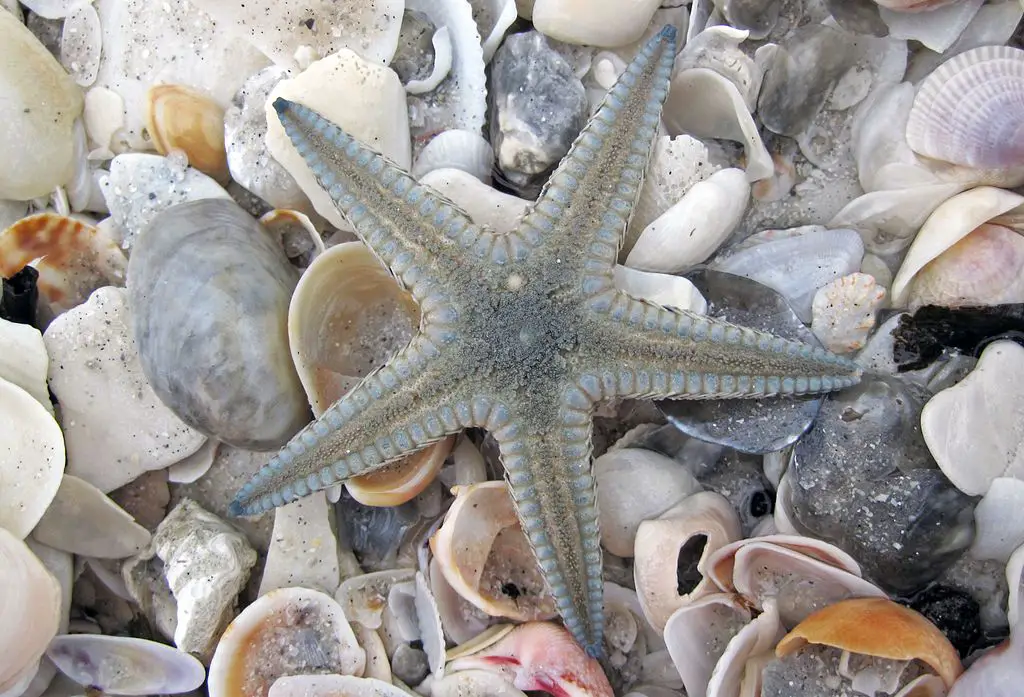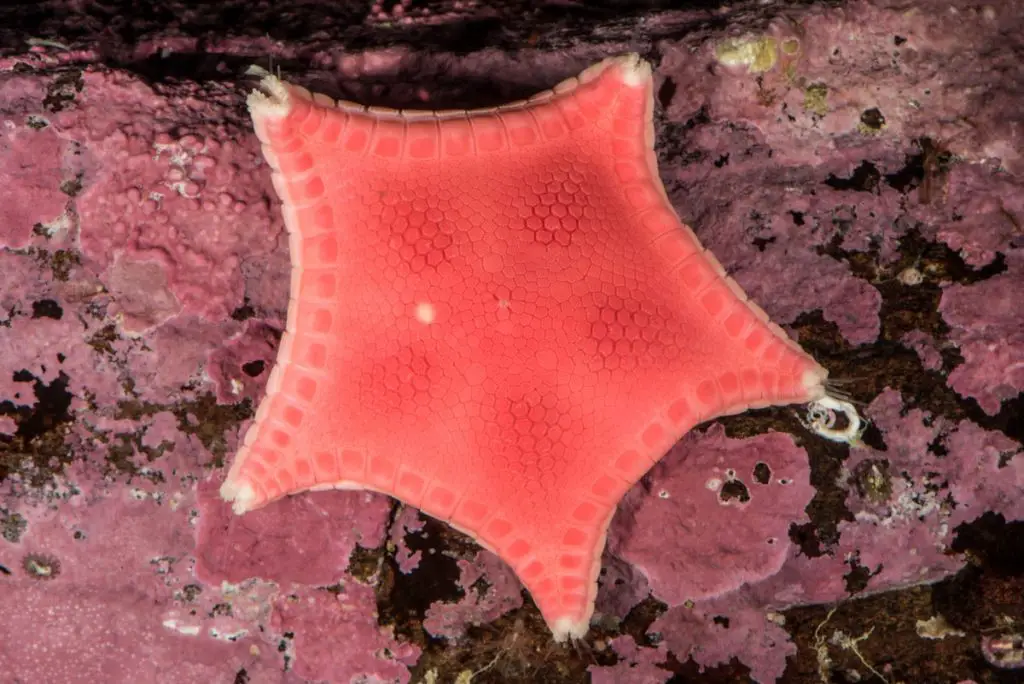Do Starfish Have Bones? (Explained)
Starfish (or sea stars) are generally simple animals without many obvious organs we would expect them to have in order to survive. They don’t have blood, hearts, or actual brains, but they’re still perfectly fine in their natural environment. Their bodies adapted to the conditions and developed different strategies to survive.
So, if you wonder if starfish have bones, in this article we’ll talk all about that. However, let’s begin with a quick answer:
Starfish don’t have bones but they do have an internal skeleton beneath their skin. The skeleton is made of many small carbon carbonate plates, called ossicles.
However, that certainly doesn’t tell the whole story. Below I’ll explain more about the starfish’s skeleton and how it’s built. Furthermore, I’ll explain whether starfish are invertebrates or vertebrates and what we can learn about their evolution based on their skeleton. Read on!
Starfish skeleton
Starfish have a skeleton beneath their skin called endoskeleton (internal). This skeleton is made of many small carbon carbonate plates (known as ossicles) and is supported by strong, flexible tissues. The starfish skeleton has an unusual three-dimensional porous structure, of which the internal meshwork of interconnected spaces is called stereom.

Moreover, the stereom mesh (or spaces) is filled with cells and connective tissue, and collagenus ligaments typically connect the plates.
The interesting thing about starfish plates is that there’s a broad literature of their paleontology that focuses on individual ossicles. This website even shows images of each part of the starfish skeleton and to which species they belong.
The mineral part of the skeleton is made of magnesium calcite, which is 71-95% calcium carbonate and 3-15% magnesium carbonate. In addition, others are: very small quantities of calcium sulfate, calcium phosphate, aluminum salts, iron salts, and various trace elements. There are three factors that control the magnesium content:
- The temperature of the seawater
- The position in the skeleton
- The inherited characteristics of the sea star.
Interestingly, sea stars’ skeleton don’t include teeth because of their unique way of eating. If you’re more interested in reading about that, check out my other blog post “Do Starfish Have Mouths And Teeth?”.
Pedicellariae
Sea stars skeleton also produces unique pincer-like jaws called pedicellariae. These marine creatures use them in defense or feeding. They’re covered in spines and the cushions of pedicellariae elevate along the spines, exposing the jaws when needed. Some starfish, like Stylasterias forreri use them to even catch small fish.
Other species, such as Toxopneustes pileolus used them mainly as a protection by having them extremely venomous.
Are starfish invertebrates or vertebrates?
Starfish classify as invertebrates. The term “invertebrate” refers to animals that don’t have a spinal column or backbone. Starfish don’t have a backbone or bones, even though they do have a skeleton composed of calcium carbonate we talked about above.
Invertebrates are a group of animals that share the spinelessness trait found in multiple groups that don’t share a most recent common ancestor. Starfish (sea stars) belong to the class Asteroidea within the phylum Echinodermata. All other echinoderms have radial symmetry and calcium carbonate skeletons as well. Other animals in this group are sea cucumbers, brittle stars, sea urchins, and sea lilies.
Interestingly, starfish and other echinoderms are more closely related to vertebrates than any other group of invertebrates. Most invertebrates classify as protostomes, which means they develop their mouth first during their embryonic development. However, starfish and other echinoderms form their anus before the mouth, which classifies them as deuterostomes.
What can we learn from starfish skeleton?
It’s fascinating how we can observe the evolution of different animal species based on their anatomy. If we look at the series of ossicles in a parallel position, we can observe how those plates change across different species to adapt to the environment.
In the vertebrates’ case, we would look at how bones have changed. For instance, human hands evolved to have opposable thumbs when we began using stone tools more frequently. However, whales evolved in a different direction, and their five fingers combined.
Starfish evolution work similarly. For example, Ceramaster starfish has a very distinctive series of ossicles, called the ambulacrals, that make up each arm. But the Pacific Asterias amurensis has ambulacral plate series that are made of much thinner and smaller pieces.
Smaller pieces allow this sea star for more flexibility and range of movement in the arms. Asterias feeds on mussels and other shellfish so more flexible body allows it to grab their prey much easier. Ceramaster however, is a deposit bottom feeder and eat organic matter settled down on the bottom. This feeding strategy makes the starfish much less active.


Starfish fossils
Fossils are the remains or traces of ancient life that have been preserved by natural processes. In most cases, we can find the whole skeletons of ancient animals. But, as I mentioned before, skeleton of starfish is made of small plates called ossicles that are connected by flexible tissues.
When sea stars die, only those tiny plates remain because other parts of the body disintegrate. This makes starfish fossils difficult to find as only ossicles are left, separated. They’re hard to locate and identify the starfish species.
However, there are some starfish fossiles preserved, with the oldest reported to be 480 million years old! Some of the fossils are sold online where you can see how well preserved they are.
You may also like:

Welcome to Bubbly Diver!
I’m glad to see you here. This blog is created for all marine creature lovers by a bubbly diver - me, Dori :)


